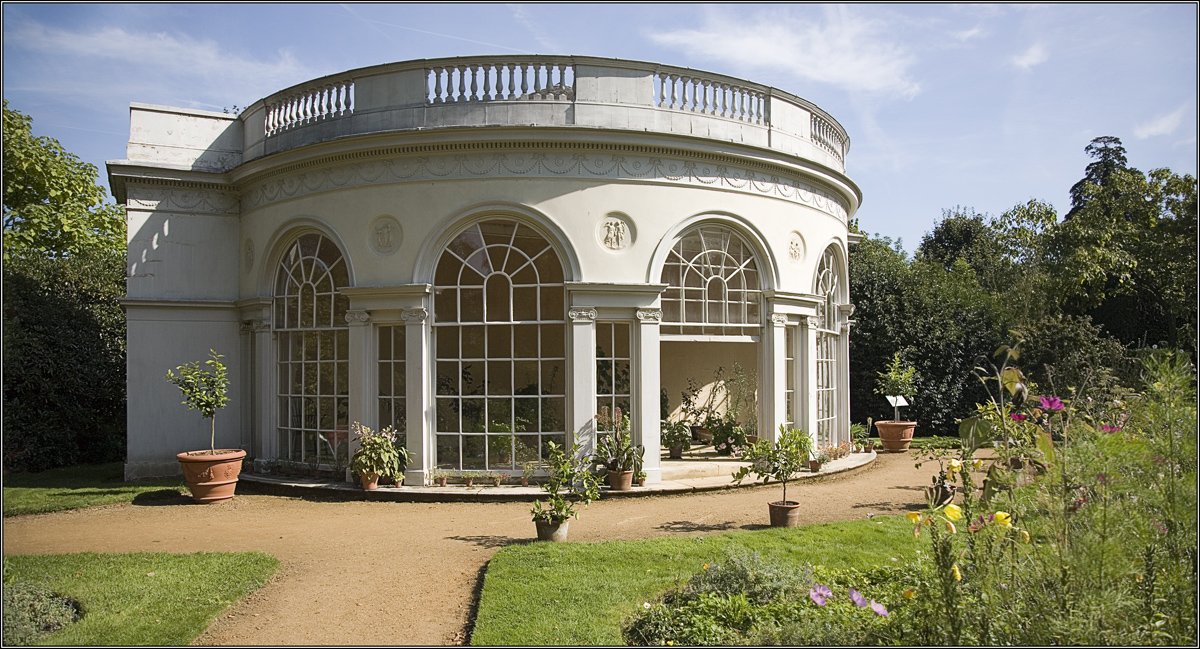#500. Neoclassical Pavilion with Semi-Circular Façade: Georgian Elegance in a Garden Setting
The image showcases an elegant neoclassical pavilion, likely a garden orangery or tea house, designed in the tradition of English Georgian architecture. The façade of the building has a characteristic semi-circular form with a graceful rotunda, crowned by a decorative balustrade around the perimeter of the roof.
The façade features a harmonious composition with rhythmically arranged tall arched windows with radial glazing patterns typical of the Georgian style. Between the window openings are circular medallions with relief images, which add a particular refinement to the building. The walls are finished in light tones, emphasizing the architectural purity and classical orderliness of the structure.
Of special note is the decorative trim of the cornice beneath the balustrade, adorned with garlands and floral ornaments, indicating the influence of the classical Palladian tradition. The columns flanking the window openings have understated capitals that support the overall austere elegance of the building.
The pavilion is organically integrated into the garden landscape, surrounded by neatly trimmed lawns and decorative potted plants, enhancing its function as a connecting element between architecture and nature.
